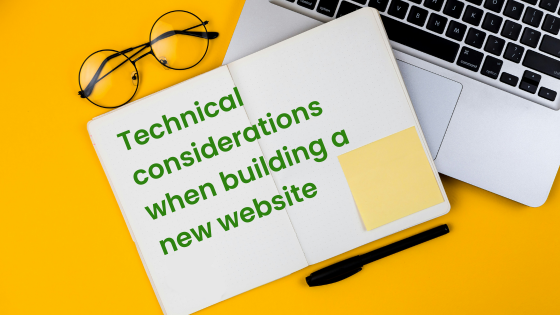Technical considerations when building a new website
Are you familiar with the female empowerment saying, “She believed she could, so she did”? Well, you could say that line was written about me. As a child, the sentence I said most was “Let me do it, I can do it!”.
So when it came to building my business website, that’s exactly what I did.
You might think that building your own website is a challenge. It’s actually easier and a more realistic possibility than you think. I’m not saying you should never enlist the skills of a web designer or developer - far from it. I work with lots of very talented ones and I could never produce a site using the kind of whizzy custom designs and advanced functionality that they do.
At the same time, I also think you shouldn’t fear trying to build a website yourself. It is absolutely doable and most website builders are very intuitive. I’ve done html courses in the past and this was much easier than coding a site from scratch!
Moving from Wix to Squarespace
After eight years I had fallen out of love with Wix. It had served me well, but there are three main reasons why I decided to move my website from Wix to Squarespace.
I find Squarespace very easy to use. I manage two client sites on there. The Help function is amazing! If you want to know how to do something, their helpdesk record a short video within your site showing you exactly how to do it.
They had a much wider choice of templates than Wix.
I had started to get a lot of spam messages and fake site subscribers through Wix, which didn’t fill me with confidence about site security.
Moving from one host platform to another did make the content moving process more complex, but I’m glad I did it. I know it’s not perfect, but it’s all my work and very I’m proud of the results.
If, like me, you are comfortable maintaining your website and want to try the build yourself, here are some technical tips based on my experience.
Set aside time to plan and prioritise your project
Building my first website was quick and easy because I’d just set up my business. I had no clients and getting my website up and running was my only priority. I worked on it every day for a couple of weeks and it was done.
Creating a website is a very different project when you have clients to prioritise. You need to treat it like any other client project. Block out time to work on it, set realistic deadlines, and give your site the time it deserves.
Find websites you like
As part of the planning process, find some websites you like the look of and enjoy using. Then ask yourself why you enjoy using them. What is is about them that makes them stand out from the crowd? Is it the user experience or the design that draws you in? Think about how you will incorporate these things into your own website.
Think about design
Search the pre-designed templates for inspiration. Don’t be too swayed by colours, fonts, styles, page names and pictures as all these are easily changed. Focus on the structure and flow of the design, and how it feels to use it. Put yourself in the shoes of your customer and choose a design you know they will enjoy using.
Don’t forget the practical stuff
1. Redirects
Let’s say you’ve shared a free download on your socials. You might not want this link to break when you switch off your old website. Setting up redirects will ensure anyone clicking on an old link can find it on the new site. There are tools and plugins to help you do this.
2. Analytics
If you use Google Analytics, remember to redirect your dashboard to your new site, so you can continue to collect and use your data.
3. Mailboxes
Research what impact, if any, switching your domain over will have on your mailbox and other hosting services. I switched my domain over to the new site on a Sunday evening. Mid-afternoon the following day I realised I hadn’t received any emails!
I love to problem-solve things like this, so I didn’t panic. I just asked Google for an answer, changed a few settings, and fixed the issue in 10 minutes. If you’re a technophobe I can completely understand why a scenario like this might fill you with dread, however sometimes the problem isn’t as complicated as you think.
Anticipate downtime
When you switch your domain over to the new website, there may be a short blackout period where you have no live website. Usually it’s minimal, but you can never account for server downtime, maintenance etc. Plan to do the switchover when it will have the lowest impact on your users.
Minimise site crossover time
Don’t pay for services you don’t want or need. I made the mistake of starting my new site without a proper plan, which resulted in me paying for two websites for six months. Lesson learned.
I hope my tips have given you the confidence boost you need to have a go at achieving something you consider outside of your technical expertise, whether that’s a website or another IT-related task. If you enjoyed this, check out the first instalment of my blog on content lessons from building my own website.
